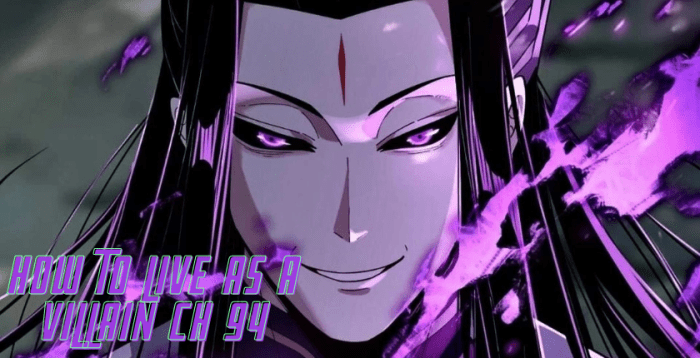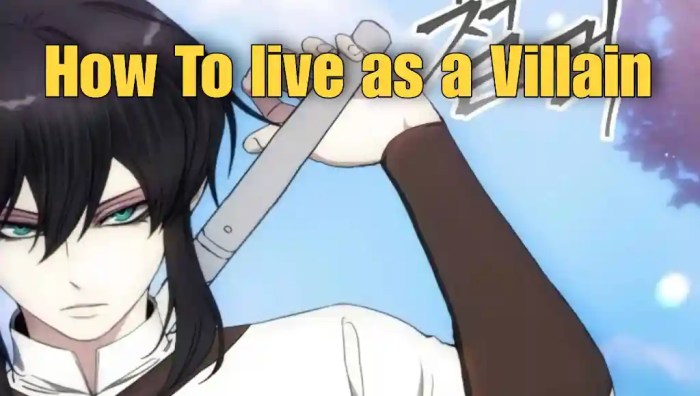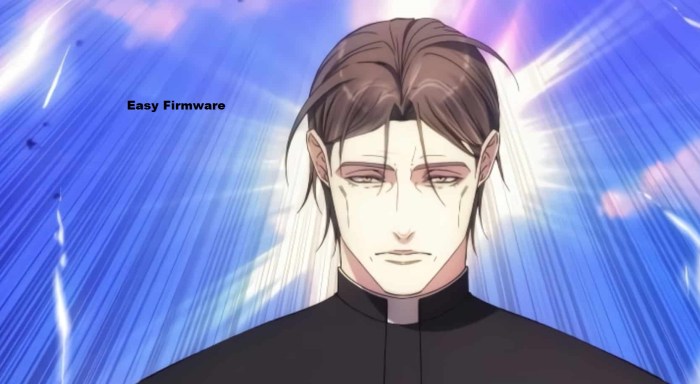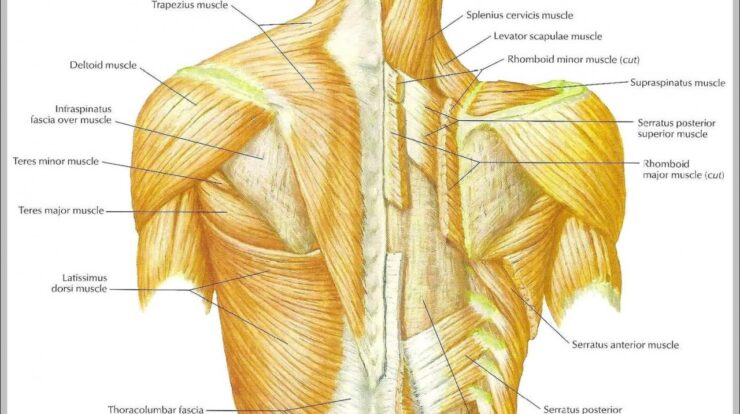
How to live as a villain ch 94 – In Chapter 94 of “How to Live as a Villain,” we delve into the depths of villainy, exploring the motivations, strategies, and challenges faced by those who dare to embrace the path of darkness. This captivating chapter promises to provide an unforgettable journey into the mind and lair of a villain, offering insights into their schemes, allies, and ultimate goals.
As we uncover the intricacies of the villain’s psyche, we’ll analyze the psychological underpinnings of their actions and the formative experiences that have shaped their worldview. We’ll dissect their intricate plans, examining their strengths and weaknesses, and the impact their actions have on the protagonist and the wider world.
Unmasking the Villain’s Mindset

Villains aren’t just born evil; they’re made. Their actions are often motivated by a complex mix of past experiences, personal beliefs, and a desire for power or revenge. Understanding the villain’s mindset can help us better appreciate their motivations and make more informed decisions about how to deal with them.
Past Experiences
The villain’s past experiences can play a significant role in shaping their worldview. For example, a villain who was abused as a child may grow up to be distrustful of others and believe that the world is a cruel place.
Yo, check it, I’m crushing this whole villain thing in ch 94, but hold up, I gotta deal with this gum disease. I’m not about to pay some dentist a fortune, so I’m gonna hit up this guide on how to cure gum disease without a dentist . Now, back to my evil plans.
I’m gonna conquer the world, one bad breath at a time!
A villain who was betrayed by a loved one may become bitter and vengeful. These experiences can lead the villain to believe that they are justified in their actions, even if they are harmful to others.
Personal Beliefs
The villain’s personal beliefs can also contribute to their actions. For example, a villain who believes that they are superior to others may be more likely to commit acts of violence or oppression. A villain who believes that the ends justify the means may be more likely to engage in unethical behavior.
These beliefs can provide the villain with a sense of purpose and justification for their actions.
Desire for Power or Revenge
Many villains are motivated by a desire for power or revenge. They may seek to control others, to inflict pain on those who have wronged them, or to simply make the world a more chaotic place. These desires can lead the villain to commit heinous acts of violence and destruction.
Ethical Implications
The villain’s choices have serious ethical implications. Their actions can cause harm to others, both physically and emotionally. They can also undermine the social order and make it difficult for people to live in peace. It is important to remember that the villain’s actions are not justified, even if they are understandable.
Yo, check it out, if you’re tryna live like a villain in Chapter 94, you gotta be all about the hustle. But hold up, if your gums are acting up, don’t trip, hit up how to cure gum disease without a dentist and get your smile back on fleek.
Then, it’s back to the grind, my dude, as you navigate the villainous underworld in Chapter 94.
We must always strive to hold villains accountable for their crimes and to protect the innocent from their harm.
Plotting the Villain’s Schemes
The villain’s schemes are the driving force behind their actions, shaping the narrative and creating conflict for the protagonist. A well-crafted villainous plot should be intricate, unpredictable, and impactful.
Yo, check it, you wanna know how to live as a villain ch 94? That’s dope, but hold up, have you been flossin’ lately? If your gums be actin’ up, don’t trip, we got you covered. Hit up this link and say bye-bye to that gum disease.
Now, back to our villain gig, how to live as a villain ch 94? You ready to roll?
The villain’s plans often follow a timeline, with each step carefully calculated to achieve their ultimate goal. They may employ various strategies to execute their schemes, including deception, manipulation, and brute force.
Strengths and Weaknesses
The villain’s strengths and weaknesses play a crucial role in the execution of their plans. They may possess extraordinary abilities, a keen intellect, or a vast network of resources. However, they may also have vulnerabilities, such as personal attachments or moral dilemmas, that can be exploited by the protagonist.
Impact on the Protagonist and the World
The villain’s actions have far-reaching consequences for the protagonist and the wider world. They may threaten the safety of innocent lives, disrupt the social order, or even plunge the world into chaos. The protagonist’s journey is often shaped by their efforts to thwart the villain’s schemes and restore balance.
Crafting the Villain’s Lair: How To Live As A Villain Ch 94

The villain’s lair is not just a hideout; it’s a reflection of their personality, ambitions, and style. It’s a place where they can retreat from the world, plan their evil schemes, and feel safe and secure. The lair’s location, architecture, and security features all play a role in shaping the villain’s character and their place in the world.
The location of the lair is often chosen for its strategic value. It might be hidden in a remote area, making it difficult for heroes to find. Or it might be located in the heart of the city, giving the villain easy access to their targets.
The architecture of the lair can also reveal a lot about the villain’s personality. A lair that is dark and foreboding might suggest a villain who is cruel and heartless. A lair that is bright and colorful might suggest a villain who is more playful and chaotic.
Security Features
The security features of the lair are designed to keep the villain safe from their enemies. These features might include high walls, security cameras, and even traps. The more secure the lair, the more confident the villain can be that they will not be caught.
The lair’s design can also have a symbolic meaning. For example, a lair that is built in the shape of a skull might suggest that the villain is obsessed with death. A lair that is built in the shape of a castle might suggest that the villain sees themselves as a king or queen.
Yo, so I was just checking out “How to Live as a Villain Ch 94,” and it got me thinking about how to take care of my gums without a dentist. I mean, who wants to pay all that dough when you can learn how to cure gum disease on your own? Plus, it’s like, super easy and cheap.
Anyway, back to the villain thing, Ch 94 is lit!
Assembling the Villain’s Allies
In any villainous scheme, loyal allies are essential. They provide muscle, brains, and emotional support, helping the villain achieve their nefarious goals. Let’s dive into the dynamics of villainous alliances and explore the motivations and loyalties that drive these cohorts.
Roles Within the Organization
The villain’s allies often fulfill specific roles within their organization. Some serve as enforcers, using brute strength to intimidate and eliminate obstacles. Others act as strategists, providing cunning plans and tactical advice. Tech wizards may handle hacking, surveillance, and gadgetry.
Loyalists serve as the villain’s right-hand man or woman, providing unwavering support and carrying out sensitive tasks.
Dynamics Between Villain and Allies
The relationship between a villain and their allies can vary greatly. Some villains inspire fear and obedience, while others cultivate loyalty through charisma and shared goals. Allies may be driven by a desire for power, wealth, or revenge. They may also genuinely believe in the villain’s cause or see themselves as victims of society, seeking retribution through villainous acts.
Motivations and Loyalty
The motivations of the villain’s allies are complex and diverse. Some are lured by the promise of material rewards, while others seek recognition or a sense of belonging. Loyalty may stem from fear, admiration, or shared values. However, it’s important to remember that loyalty can be fickle, and allies may turn against the villain if their own interests are threatened.
Conquering the Villain’s Challenges

Villains face a multitude of obstacles in their quest for power and dominance. These challenges can stem from both external forces and internal conflicts. Overcoming these obstacles requires a combination of cunning, adaptability, and unwavering determination.
External challenges may include rival heroes, relentless law enforcement, and unexpected setbacks. The villain must carefully assess these threats and develop strategies to neutralize or exploit them. They may employ deception, intimidation, or even brute force to achieve their goals.
Adapting to Changing Circumstances
The path to villainy is rarely linear. Villains must be prepared to adapt their plans as new information emerges or unforeseen circumstances arise. They must be able to think on their feet, anticipate potential threats, and adjust their strategies accordingly.
Failure to adapt can lead to disastrous consequences. The villain may become trapped in a corner, unable to recover from a setback. Conversely, success in overcoming challenges can boost the villain’s confidence and reputation, solidifying their position as a formidable force.
Impact of Failures and Successes, How to live as a villain ch 94
The villain’s failures and successes have a profound impact on their overall plan. Each setback can serve as a valuable lesson, providing insight into their weaknesses and the need for improvement. On the other hand, each victory strengthens the villain’s resolve and emboldens them to take even greater risks.
By carefully analyzing their past experiences, villains can identify patterns and develop strategies to minimize the likelihood of future failures. They can also learn from the mistakes of their adversaries, exploiting their weaknesses to gain an advantage.
Final Review
Through this comprehensive exploration, we gain a deeper understanding of the villain’s lair, its symbolic significance, and the practical considerations that go into its design. We’ll also delve into the dynamics between the villain and their allies, examining their motivations, loyalty, and the roles they play within the villain’s organization.
Ultimately, “How to Live as a Villain: Chapter 94” offers a captivating glimpse into the life of a villain, providing valuable lessons on overcoming challenges, achieving ambitions, and leaving an unforgettable mark on the world.
FAQ Resource
What is the significance of the villain’s lair?
The villain’s lair serves as a physical manifestation of their personality and ambitions. It reflects their desires, fears, and the means by which they seek to achieve their goals.
How do villains overcome challenges?
Villains employ a variety of strategies to overcome challenges, including cunning, manipulation, and brute force. They adapt to changing circumstances and learn from their mistakes.
What are the motivations of the villain’s allies?
The villain’s allies may be driven by a desire for power, wealth, or revenge. They may also be loyal to the villain’s cause or simply fear the consequences of betrayal.





